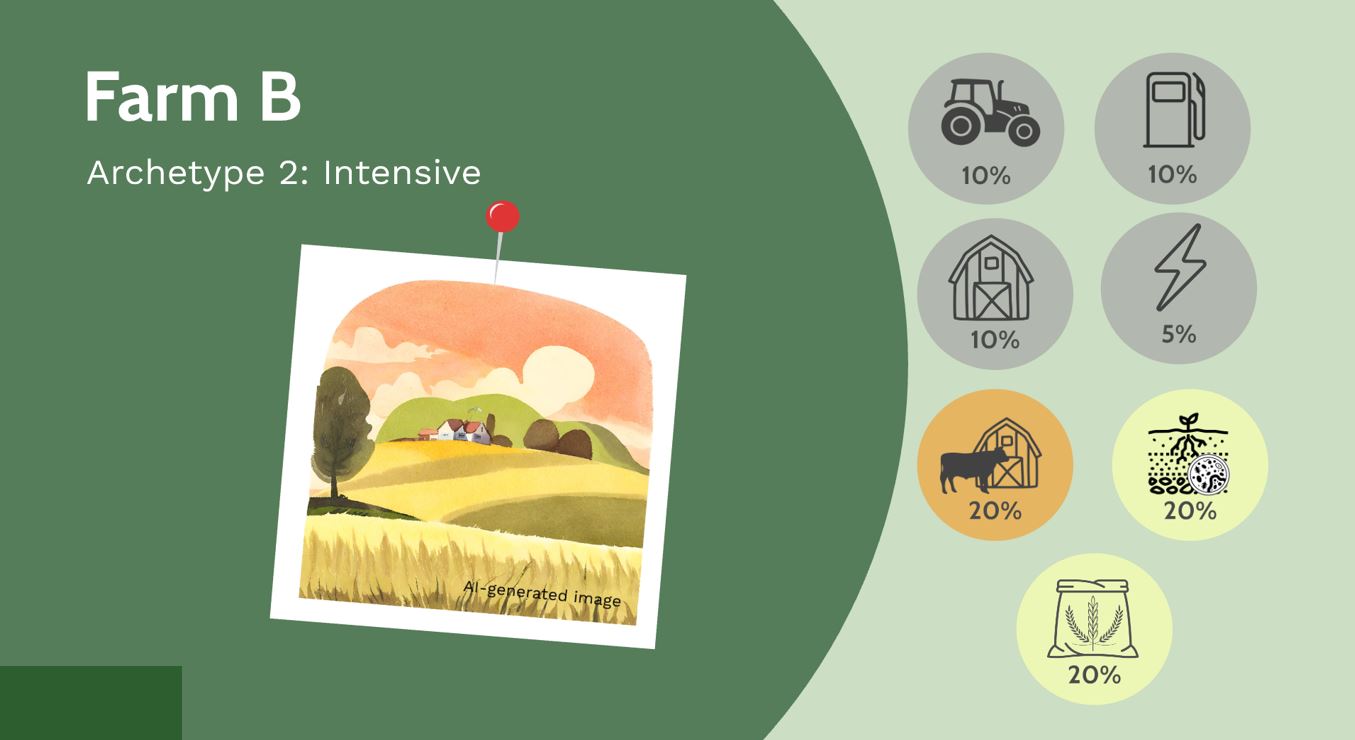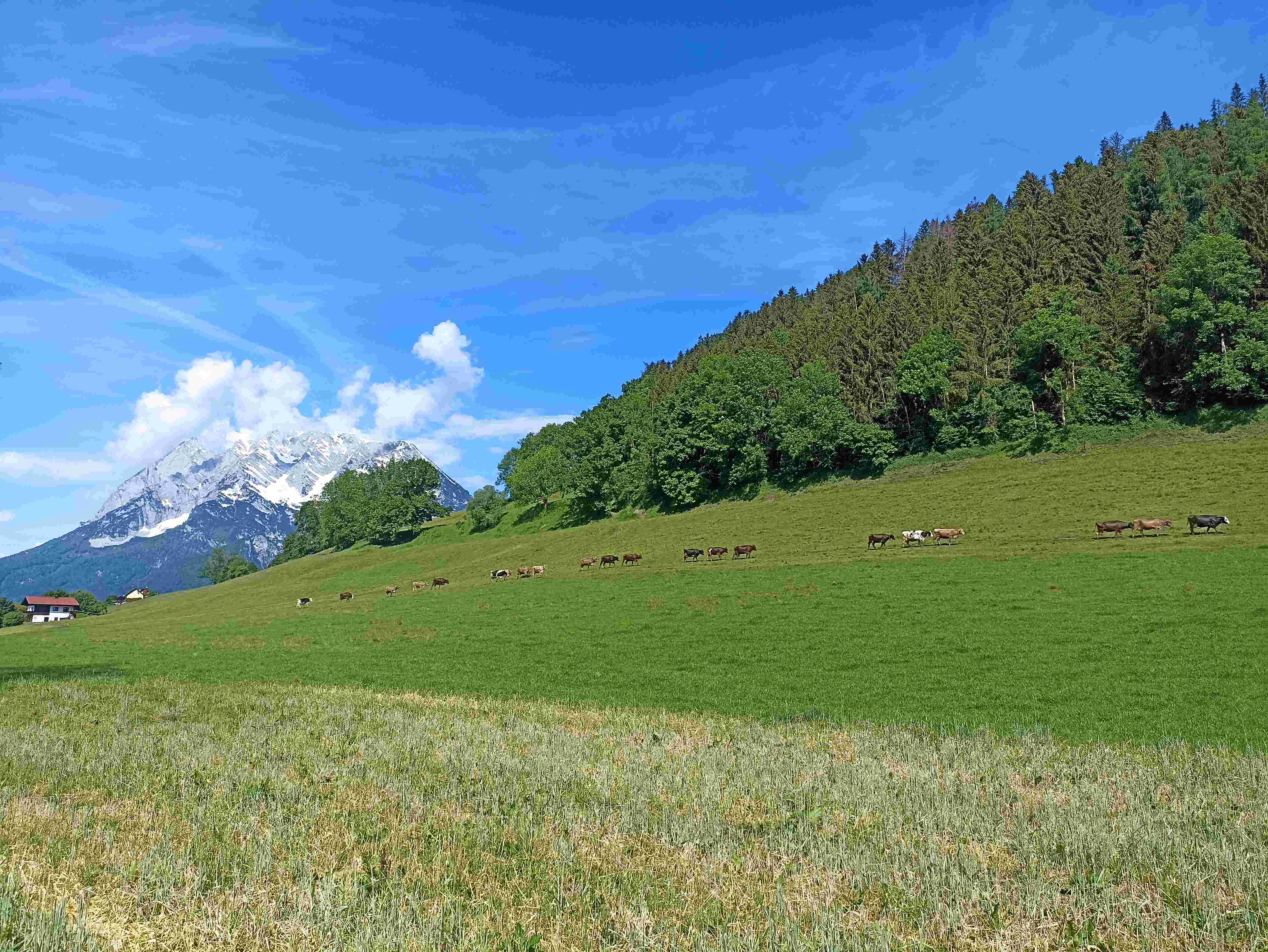The list of possible measures to reduce greenhouse gas emissions on dairy farms has been expanded to include new options. These were selected based on an in-depth analysis and in collaboration with the project companies, taking company-specific key figures into account. Through consultations and with the help of company dossiers, 13 pilot companies implemented different measures in 2023. There was a potential for over 100 viable mitigation options by 2023; Around 200 reduction options have now been documented. However, this number includes ALL measures implemented, although different companies have chosen some of the same measures. The effective number of different reduction measures is 60. This shows that there are many small improvements that can help companies achieve greater greenhouse gas efficiency. Many of the measures can be read in the brochure “Climate protection in agriculture”: raumberg-gumpenstein.at/klimaschutzinfo.
The measures were divided into the following emission categories:
- Building
- machines
- Energy (diesel, electricity)
- Animal husbandry (CH4)
- Animal husbandry (manure)
- Fertilization (N 2 O)
- Feed provision (N 2 O) and
- Purchase of feed
At the beginning of 2024, the project was expanded to a total of 56 companies. Their greenhouse gas emissions were calculated for the previous calendar year 2023 in accordance with LCA standards or ISO 14040 (14067). The carbon footprint (CFP) of the farms ranges from approximately 0.3 to 3.4 kg CO 2 eq per kg FPCM, 1,500 to 14,000 kg CO 2 eq per hectare of farm area and 1 to 30 kg CO 2 eq per EUR income contribution. Firstly, the different functions of agriculture are taken into account, including the opportunity to generate income. Second, the resulting values depend on the global warming potential metrics used. Thirdly, this range also shows differences in the management of the companies.
As part of the project, the farms were divided into four archetypes or management classes: extensive, intensive, efficient and inefficient management. Measures to reduce emissions have been or will be tailored to the specific conditions of each type of operation over the course of the project.
A central project goal is to transfer the knowledge and expertise to reduce greenhouse gas emissions to a larger number of milk producing farms. This includes compiling knowledge and developing a consulting concept as the project progresses.










